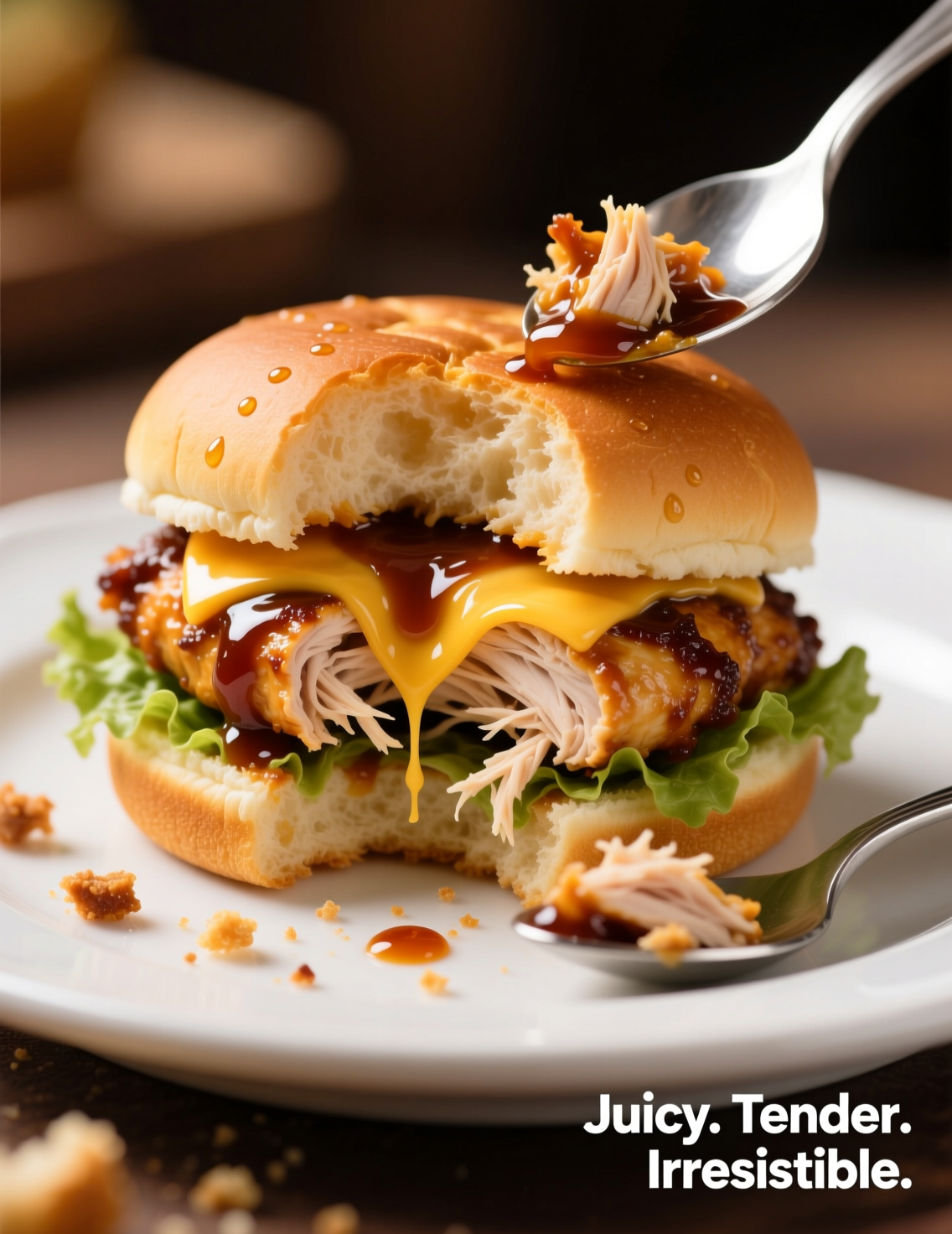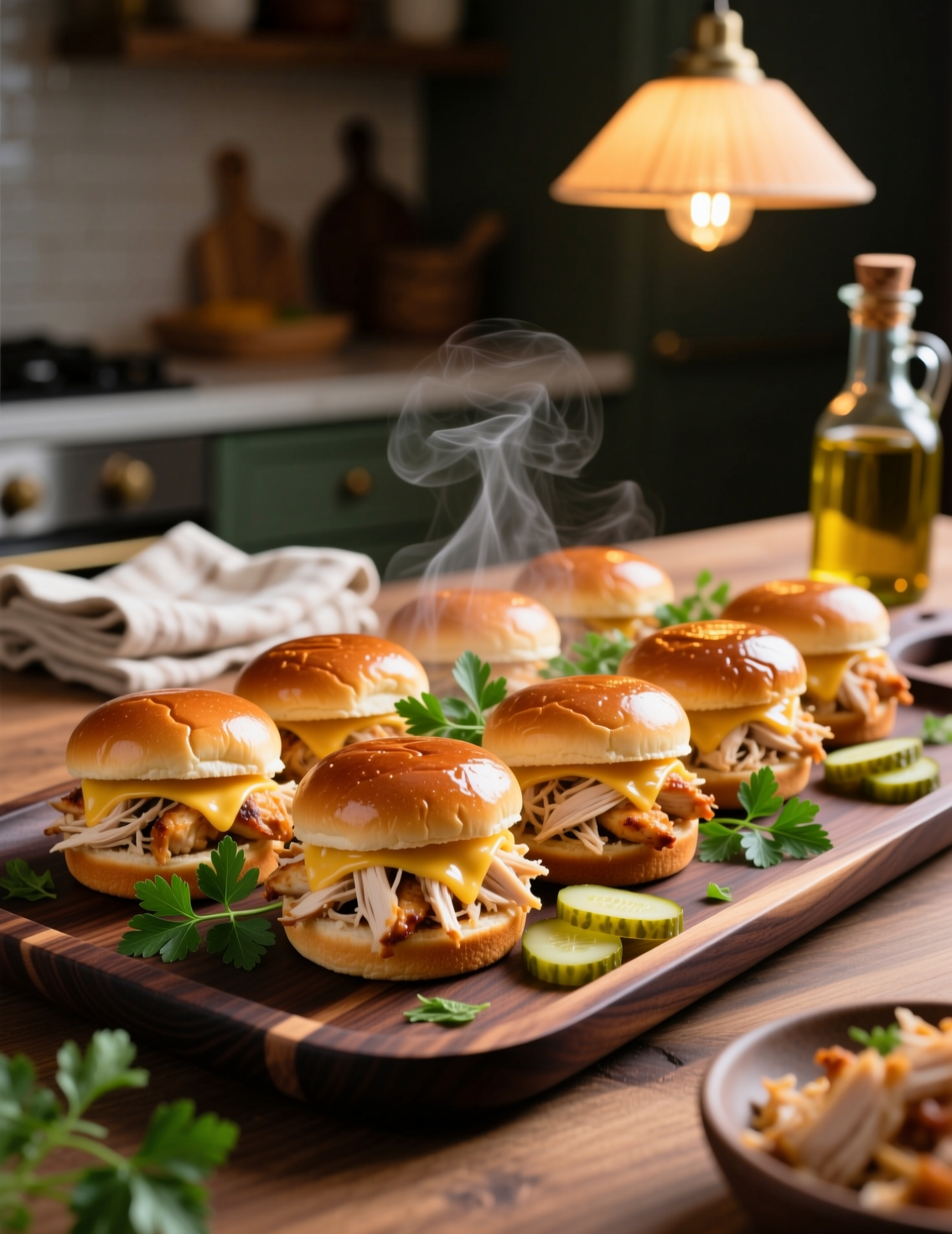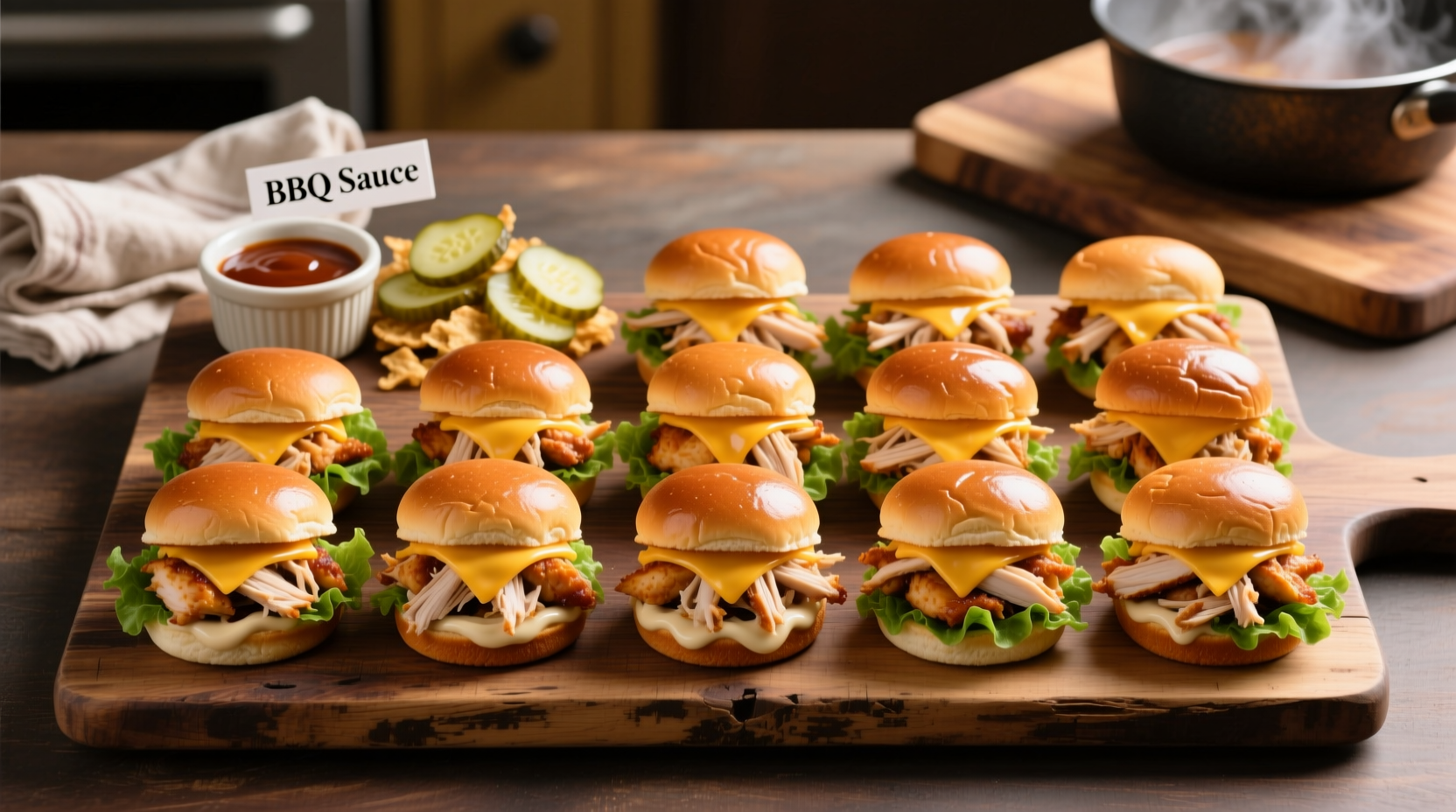Few dishes carry the same charm as sliders. They’re not just smaller sandwiches, they’re a stage where textures and flavors perform in bite-sized harmony. And when we talk about Shredded Rotisserie Chicken Sliders, we’re walking into territory that blends convenience with culinary craft. This recipe makes 12 servings, but more than that—it makes memories at tables where people reach for seconds before finishing their first.
Why Rotisserie Chicken is the Game-Changer
Rotisserie chicken has something oven-baked or pan-seared often lack: depth. The slow turning spit bastes the bird in its own juices, creating meat that’s succulent but also evenly cooked. For professionals, this means a shortcut without losing quality. A whole chicken can be broken down in less than 10 minutes, saving prep time in a high-volume kitchen.
Statistics don’t lie either. According to the National Chicken Council, over 900 million rotisserie chickens are sold in the U.S. annually. That’s not just convenience—it’s a culinary movement. Chefs know this is an ingredient guests trust because it comes with consistency, flavor, and a touch of nostalgia.
Ingredients: More Than Just a List
This dish may sound simple, but simple rarely means thoughtless. Here’s what you’ll need for 12 servings:
- 1 large rotisserie chicken, fully shredded (about 5 cups meat)
- 24 slider buns, soft and slightly sweet
- 1 cup mayonnaise or aioli base
- ½ cup Dijon or grain mustard
- 1 cup shredded cheddar or provolone
- 1 medium red onion, thinly sliced
- 1 ½ cups coleslaw mix (cabbage + carrots)
- ½ cup pickles, thinly sliced
- 3 tbsp melted butter
- 2 cloves garlic, minced
- Salt, cracked pepper, and smoked paprika to taste
Notice the balance. We’re layering fat with acid, crunch with tenderness. In professional kitchens, this is what’s called flavor architecture. A slider shouldn’t collapse into soggy bread, nor should it overwhelm with just one note of taste.

Preparing the Chicken Like a Professional
The mistake most home cooks make? They shred chicken without thinking about fiber direction. Always pull the meat along the grain to retain long strands. Short choppy pieces dry out faster and lose juiciness in the bun.
In a pro setting, I’d use latex gloves and pull meat directly into a hotel pan. Tossing it lightly with a splash of reserved drippings or a bit of chicken stock keeps it supple. Moisture is currency in sliders—spend it wisely.
Crafting the Sauce Layer
Here’s where the sliders go from “good” to “what just happened in my mouth.” Mix mayo with Dijon mustard, a touch of smoked paprika, and minced garlic. The mayo clings, the mustard cuts, and paprika hums in the background with smokey warmth.
Professionals often adjust this based on audience. Corporate luncheons? Keep it mild. Food festivals? Spike it with Sriracha or chipotle for heat that lingers. The rule is simple: sauce defines the slider’s identity.
Building the Perfect Slider
There’s a sequence, and if you break it, the whole thing suffers. Bottom bun first, always. Spread sauce, then chicken, then cheese. Slide it under a salamander or oven broiler just long enough to melt the cheese into the fibers of the meat.
Only then do you add onion, slaw, and pickle. Why last? Because cold crunch must meet warm softness at the first bite. Professionals treat this as choreography—like plating desserts, but with bread.
The Role of Buns in Structural Integrity
Soft Hawaiian rolls are popular, but not always the smartest choice. Their sweetness works beautifully with savory chicken, yes, but they tend to collapse under sauce. Brioche buns, though pricier, hold up better during service.
In catering, I’ve seen chefs brush buns with melted butter mixed with garlic before assembly. This creates a barrier and adds aromatic depth. Another trick? A quick 2-minute toast on each bun side—it prevents sogginess, an issue that ruins sliders more often than people admit.
Scaling for 12 Servings
Here’s where professionals earn their paychecks. Cooking for 2 people is a breeze. Cooking for 12 while maintaining consistency? That’s craft.
Divide shredded chicken into equal portions—about ⅓ cup per slider. Portioning prevents the dreaded “last slider has no filling” problem. Always pre-mix slaw in small batches, no more than 3 cups at a time, so dressing doesn’t drown it.
For service, assemble in rows of six on sheet trays. Wrap loosely in foil if holding for more than 10 minutes. Steam buildup keeps buns soft, but don’t overdo it or they’ll go mushy.
Common Mistakes and How Pros Avoid Them
One mistake? Overloading sliders with sauce. It looks generous, but it drips, makes bread soggy, and kills texture balance. Professionals spread sauces thin, like painting a wall evenly.
Another mistake: shredding chicken too early. Once exposed, meat dries fast, especially in walk-in fridges. The trick is to shred close to service time and keep the carcass covered until then. The bones hold heat and moisture longer than people think.
Lastly, inconsistency in cheese melt. If you add cold cheese directly onto chicken, you’ll get half-melted clumps. Pre-grating and holding cheese at room temperature ensures even melt. It’s a 2-minute detail that saves you embarrassment.
Pairings and Service Insights
Sliders are rarely served alone in professional settings. A crisp side salad or roasted potato wedges balance richness. For beverage pairings, a crisp pilsner or sparkling lemonade cuts through mayo’s fat.
Food costs matter too. Using rotisserie chicken for sliders comes at roughly $1.20 per serving (based on U.S. retail pricing). Compare that to using premium steak or salmon sliders, and you’ll see why caterers lean heavily on chicken for events.
Cultural and Culinary Versatility
Sliders aren’t bound by one cuisine. A rotisserie chicken base lets you pivot flavors fast. Add chipotle and queso fresco for a Mexican touch. Toss with teriyaki glaze and sesame slaw for Asian-inspired catering. Or keep it Southern with pimento cheese and pickled jalapeños.
In professional kitchens, versatility means survival. A single base recipe that adapts into five cultural profiles is gold. Chicken, with its mild profile, plays that role perfectly.

Emerging Trends in Sliders
Food trends show a clear movement toward portable, shareable meals. The National Restaurant Association reports sliders rank among the top 10 bar food items in demand since 2023. Why? Portion control and communal dining. Guests want variety without committing to one large entrée.
Plant-based sliders are also growing, but chicken remains king. It’s leaner than red meat, fits into high-protein diet trends, and still carries indulgent appeal when layered with cheese and sauce.
Expert Tips for Presentation
In catering, guests eat with eyes first. Garnishing sliders individually may sound extra, but a tiny herb sprig or a dust of paprika on top sets them apart. Mini skewers also solve a problem: they keep the layers intact during service.
Lighting matters too. I’ve plated sliders under harsh yellow bulbs and watched them look greasy. Soft white or natural light enhances the bun’s golden hue and cheese’s sheen. Professionals think of these details because they change perception.
Conclusion: Crafting More Than a Sandwich
Shredded Rotisserie Chicken Sliders for 12 people isn’t just a recipe—it’s a performance. From the way chicken fibers pull apart to the final bite where crunch meets creaminess, every detail matters. Professionals know it’s about balance: moisture, structure, flavor layering, and service timing.
The takeaway? Don’t treat sliders like mini sandwiches. Treat them as canvases where small adjustments make monumental differences. Whether for a backyard gathering or a corporate event, these sliders prove that small can indeed be mighty.
FAQs
What makes rotisserie chicken ideal for sliders?
Its even cooking, built-in flavor, and moist texture make it perfect for shredding and layering.
How many sliders does one rotisserie chicken yield?
A standard bird gives about 12 well-portioned sliders with proper shredding.
What buns work best for shredded chicken sliders?
Brioche holds structure better, while Hawaiian rolls add sweetness but soften quickly.
How do you keep shredded chicken moist?
Mix with a splash of drippings or chicken stock right after shredding.
Can these sliders be made ahead of time?
Yes, assemble close to serving and keep loosely covered with foil to prevent drying.
What cheese melts best in chicken sliders?
Cheddar, provolone, or pepper jack melt evenly and complement chicken flavor.
How do you stop sliders from getting soggy?
Toast buns lightly and spread sauces in thin, even layers.
Are these sliders suitable for catering events?
Absolutely, they’re cost-effective, scalable, and crowd-pleasing for large groups.
What sides pair well with shredded chicken sliders?
Crisp salads, roasted potatoes, or pickled vegetables balance their richness.
Can I change the flavor profile of the sliders?
Yes, switch sauces or slaws to create Mexican, Asian, or Southern-inspired versions.

Mariana is a passionate home cook who creates delicious, easy-to-follow recipes for busy people. From energizing breakfasts to satisfying dinners and indulgent desserts, her dishes are designed to fuel both your body and hustle.
When she’s not in the kitchen, she’s exploring new flavors and dreaming up her next recipe to share with the Foodie Hustle community.

